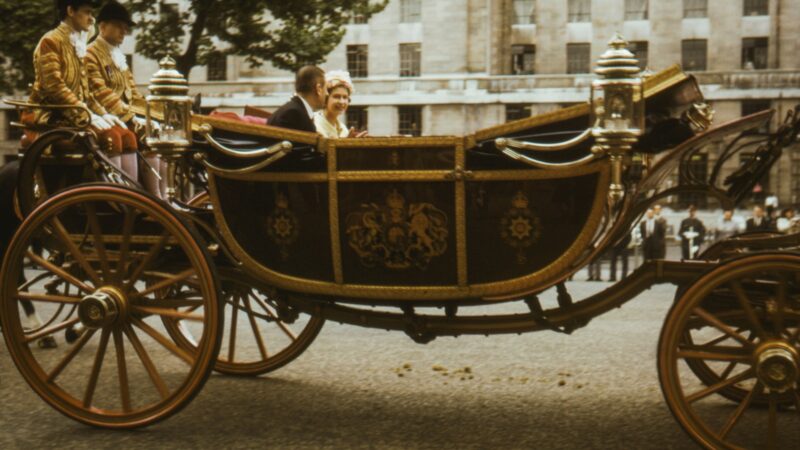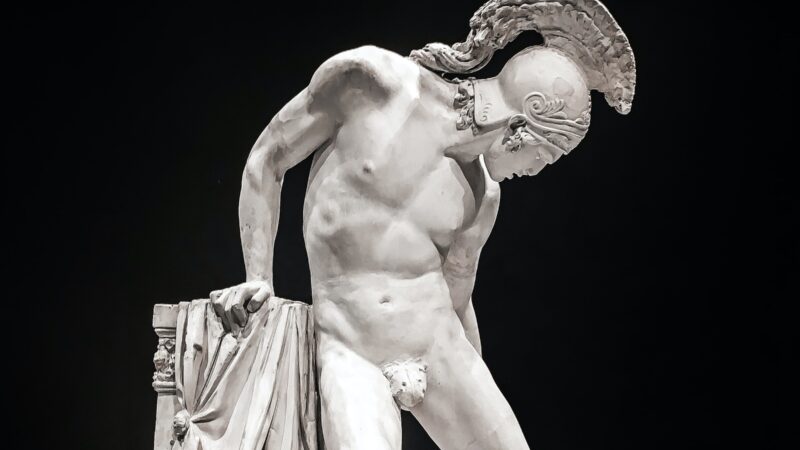Having tackled the growing hydra of socialist radicalism through his previous major novels, Fyodor Dostoevsky set out in The Brothers Karamazov to address what he saw as the fountainhead of the mid-century Russian ideological shifts: the loss of faith in the the gospel and in the Orthodox Church as the means established by Christ to display that gospel to the nations.
To be sure, Dostoevsky saw this loss of faith primarily in the upper-class intelligentsia and the later populist youth. The former, the Westernizers of the 1940s-60s whom Dostoevsky pilloried in everything from Notes from Underground to The Devils, had intended to enlighten the peasant class—part of which involved relieving them of their superstitious belief in Christ’s divinity and Christian morality. The latter generation of 1870s Populists broke from the amoral nihilism of that generation (in no small part due to Crime and Punishment and The Devils) and instead venerated the peasants’ simple way of life and native morality; however, refusing to acknowledge their source in Christ and the Russian Orthodox Church, the populists still maintaining secular aims.
Dostoevsky’s response to both groups was to advocate a return to the fullness of the faith in Orthodoxy, which could satisfy all needs of the human individual, both physical and transcendent. However, having previously been a radical himself, Dostoevsky was ever willing to pursue this goal through a conciliatory approach, especially if he might thereby rescue some readers from the contradictions and potential disasters of radicalism. He does this in The Brothers Karamazov by taking seriously a primary objection to Christianity: the problem of evil.
Ivan Karamazov: The Problem of Evil
He articulates the problem of evil through Ivan Karamazov. In Book Five, Chapter V, “The Grand Inquisitor,” Ivan follows up his description in the previous chapter of the senseless abuse of children (all gathered by Dostoevsky from real-life newspaper stories) to his little brother Alyosha, a would-be priest, with the one of the most famous stories-within-a-story in world literature. These chapters, according to Dostoevsky’s letters, are among the most important in the novel. They lay out the problem of evil and its refutation—through a parallel story-within-a-story: Book VI, The Russian Monk, which presents the life and sayings of the local monastery elder Fr. Zosima, compiled by Alyosha long after the novel’s events.
Acknowledging himself as no philosopher—to say nothing of his being an Eastern Orthodox Christian, who generally eschew Western theory-forward approaches in favor of ascetical practice and theosis as proof of the faith—Dostoevsky does not merely present logical arguments for or against Ivan’s atheism. (Indeed, one of the greatest aspects of this self-proclaimed atheist is that it is debatable whether Ivan believes his own professed atheism. He often waffles in, and at times regrets, his stance and, like Dostoevsky’s previous protagonists, is horrified upon seeing his stated beliefs actually lived out by Smerdyakov. Furthermore, Ivan often fits less the title of Enlightenment philosophe and more that of Romantic hero in protest against an unjust God whom he nonetheless believes in.) Rather, Dostoevsky addresses Ivan’s problem with evil not with a matching argument and polemical story, but with the life of a saint.
Fr. Zosima: A Holy Life
In Book VI, The Russian Monk, Dostoevsky breaks from the novelistic form and uses, instead, the mystical, timeless mode of hagiography. Because it is ordered by a moral message rather than causal events or their concomitant psychological elements, such a mode has struck many critics as dismissable, being unrealistic or simply jinned up. Dostoevsky acknowledges this in a letter to Konstantin Pobedonostsev, the Russian Orthodox Church’s representative in the Tsar’s cabinet: “Something completely opposite to the world view expressed earlier appears in this part, but again it appears not point by point but so to speak in artistic form. And that is what worries me, that is, will I be understood and will I achieve anything of my aim?”
Nonetheless, by answering the problem of evil with a holy life lived in spite of evil, he tells his assistant editor, Dostoevsky intends to show “that a pure, ideal Christian is not something abstract, but graphically real, possible, standing before our eyes, and that Christianity is the only refuge from all its ills for the Russian land,” and, presumably, for those of the rest. In short, Dostoevsky answers the world’s evil with holiness—with the saints alive in every generation of Orthodoxy that allow the Church to call itself “Holy” in the Nicene Creed and by whose theotic prayers and actions it redeems a fallen world.
The Russian Monk, however, goes beyond merely presenting one exception to evil. Contrary to the atheist-materialist-socialist arguments (then and now) that people and their actions are merely effects of environment, Dostoevsky maintains that part of the image of God in man is an inalienable individual moral agency. Thus, the redemption shown in Fr. Zosima’s story is available to all. Far from presenting merely one anecdote, The Russian Monk transforms all characters in The Brothers Karamazov into potential likenesses of Christ and His redemption of the world.
As Nathan Rosen argues, this opposite pole of “The Grand Inquisitor” defends the faith not through rational argument but through aesthetic fullness—by presenting a man who embodies in his own life the story and truth of Job. According to Rosen and other sympathetic critics, Zosima’s story, “is the literary equivalent of a precious hallowed old church icon,” and as such it renders the rest of the novel, broadly, and Alyosha’s path, specifically, into the realm of iconography—the tradition that, following Christ’s being the first Icon of God the Father, reveals the truth of the gospel through aesthetic incarnation.
Grushenka: Dostoevsky’s Magdalene
And, yet, at the time of the novel’s events, Alyosha is not as sanguine as the later Alyosha who recorded Fr. Zosima’s life. Indeed, between his conversation with Ivan (and the discovery of his own unsuspected resentment of God it revealed) and Fr. Zosima’s non-miraculous death*, his faith is quite shaken. He is, thus, primed for either a full loss of faith or a restoration in the chapters preceding “Cana of Galilee,” which Dostoevsky describes to his assistant editor as “the most significant [chapter] in the whole book.”
Having felt his faith shaken by Ivan’s “poem” and the circumstances of Fr. Zosima’s death, Alyosha reverts to the way of life he knows to be native to himself as a Karamazov: sensual degradation. Agreeing to go with the atheist student Rakitin (who’s just been wishing to trip up Alyosha so he might gloat) to the home of his father and eldest brother’s paramour, Agrafena “Grushenka” Svetlova, Alyosha intends to…do whatever Dostoevsky’s readers might infer from the author’s 19th-century understatement.
Grushenka immediately catches the mood and starts to flirt with the boy. Any other time she would have been more than willing to get her claws in yet another Karamazov male—especially the one who, by his purity, represents the moral opposite of her supposed fallenness. Although she conceals some secret joy altogether different from her vengeful persona of seduction, Grushenka begins to play the harlot she knows Alyosha considers her to be. “She suddenly skipped forward and jumped, laughing, on his knee, like a nestling kitten, with her right arm around his neck. ‘I’ll cheer you up, my pious boy.’”
And, yet, far from falling to her ways, Alyosha discovers that Fr. Zosima’s teaching was not altogether without fruit. “This woman, this ‘dreadful’ woman, had no terror for him now, none of that terror that had stirred in his soul at any passing thought of woman.” Furthermore, he soon learns that the joy hidden beneath her flirtation springs from the recent discovery that the man who had seduced and abandoned her as a teenager is returning, and that she is willing to forgive him.
This turn of events has emptied her impulse to reduce Alyosha to her fallen position. “It’s true, Alyosha, I had sly designs on you before, for I am horrid, violent, but at other times I’ve looked upon you, Alyosha, as my conscience…I sometimes look at you and feel ashamed, utterly ashamed of myself.” No doubt this shame had driven her late desire to cause Alyosha’s fall.
However, just as Ivan’s description of the suffering of children primed the way for the denial of Christ in “The Grand Inquisitor,” Grushenka’s act of forgiveness for being seduced as a young girl is the prelude to her—and Alyosha’s—redemption. For, after overthrowing nearly a decade of resentment in the name of forgiveness and reconciliation, Grushenka finally learns of the death of Fr. Zosima. “She crossed herself devoutly. ‘Goodness, what have I been doing, sitting on his knee like this at such a moment!’ She started up as though in dismay, instantly slipped off his knee and sat down on the sofa.”
Witnessing such an immediate response of reverence begins the restoration of Alyosha’s faith. To Rakitin, who is still proud of having delivered Alyosha to Grushenka, Judas-like, for 25 rubles, Alyosha says, “look at her—do you see how she has pity on me? I came here to find a wicked soul—I felt drawn to evil because I was base and evil myself, and I’ve found a true sister, I have found a treasure—a loving heart. She had pity on me just now…Agrafena Alexandrovna, I am speaking of you. You’ve raised my soul from the depths.”
The paired forgiveness and reverence of Grushenka, the person Alyosha least expected to show such things, provides the miracle he was waiting for: the manifestation of Fr. Zosima after death. For, besides her forgiveness of the officer, in fearing what effect her own seductiveness might have had on Alyosha Grushenka displays Zosima’s core message. Assuming one’s own moral responsibility—not merely for one’s actions, but, according to Fr. Zosima, for all men’s actions—is the whole means of acquiring the likeness of Christ, and Alyosha sees Grushenka, of all people, practice it.
From the Orthodox perspective, in thus fulfilling her innate human image of God with behavior according with His likeness, Grushenka has become a living icon, as Christ, the first Icon, had been. Grushenka’s is the miracle of a Magdalene conversion, manifested before Alyosha’s eyes, and it primes him for his own symbolic incarnation of Fr. Zosima’s—and the unnamed Christ’s—message, spirit, and way of life in the climactic next chapter.
Alyosha: A Living Icon
Ultimately, each reader must decide for him or herself whether Dostoevsky’s answer to the problem of evil, indeed, answers it. Many critics have considered Ivan’s objection to Christianity insurmountable. Leaving aside possible confirmation bias in such academic interpretation, things are, admittedly, not helped by the response’s seeming so obscure—even arguably interrupting—especially to Western audiences that have generally foregone monasticism, iconography, and veneration of saints since the Reformation and subsequent Enlightenment.
However, the true answer to evil, according to The Brothers Karamazov, is not a simple one-and-done response provoking a change of mind (though Alyosha’s realization in “Cana of Galilee” of the Orthodox sacramental view of creation involves just that). Rather, it is a disposition and way of life depicted first through Fr. Zosima, then the redeemed Grushenka, and finally through a not much older but very much wiser Alyosha, who through the rest of the book follows his Elder’s direction in living out the gospel in the real world, amidst but not stifled by its temptations and evils.
And, indeed, when Alyosha meets the fourteen-year-old self-described radical, Kolya, who both parodies Ivan and represents a serious ideological influence on his younger friends, he is unperturbed. Doing what Dostoevsky hoped, himself, to do with The Brothers Karamazov, Alyosha redirects the good-hearted youth’s radicalism into a simple and more impactful Christlike love of the least of these—specifically, the smallest, Ilyusha—and he manifests the humble confidence and tranquility not merely of his former elder, but of Christ and His sacramental life.
*It was considered a proof of a holy man’s life that his body did not decompose post mortem; the lack of such incorruptibility in Fr. Zosima leads Alyosha to doubt whether, as Ivan has lately denied, a God of justice exists. Ironically, by expecting a grandiose miracle to meet his spiritual crisis, Alyosha discovers that he is little better than those described by Ivan in “The Grand Inquisitor” who are too weak for the moral freedom (and responsibility) inherent in Christianity. It also reveals Alyosha’s desire to defer his moral responsibility (an antiChristian impulse in Dostoevsky) to the holy man’s direction.



